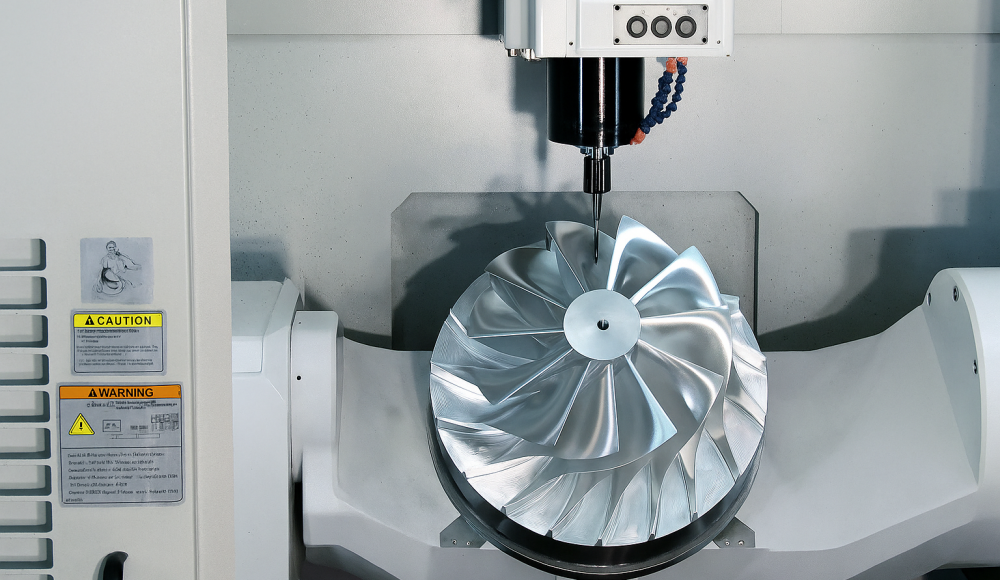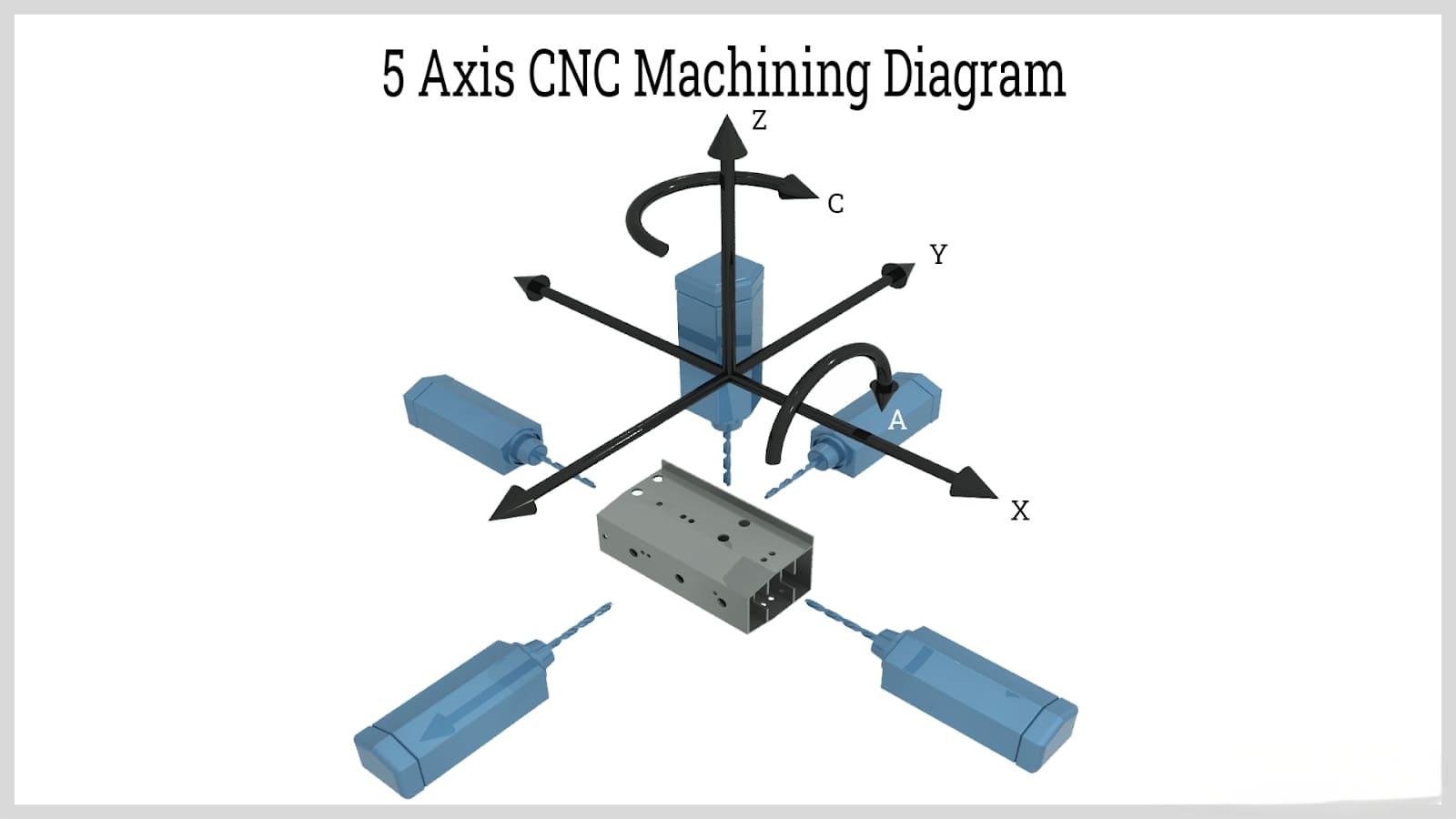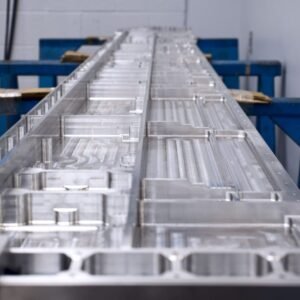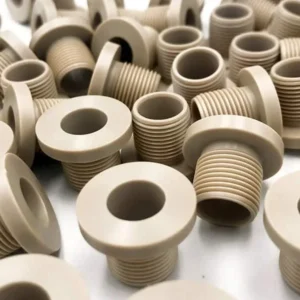Durante las décadas, Mecanizado CNC ha evolucionado de simples molinos de tres ejes a centros de múltiples eje altamente sofisticados. Hoy, El verdadero mecanizado de 5 ejes representa el pináculo de la fabricación de sustractivos, Combinando cinco ejes simultáneos de movimiento para abordar las geometrías más complejas en una sola configuración. Mientras que las primeras impresiones de los centros de 5 ejes a menudo incluyen "alto costo" o "programación difícil,"Las tiendas modernas han demostrado que con la inversión adecuada en software, fijación, y entrenamiento, 5-El mecanizado del eje paga dividendos en precisión, velocidad, y libertad de diseño.
Este artículo proporciona una inmersión profunda en 5-mecanizado del eje—Provente cómo funciona, las diferentes configuraciones de la máquina que encontrará, sus principales ventajas y inconvenientes, y consejos prácticos para aprovechar al máximo esta poderosa tecnología.
¿Qué es el mecanizado de 5 ejes??
5-mecanizado del eje se refiere a las operaciones de CNC en las que la herramienta de corte (o la pieza de trabajo) es capaz de moverse en cinco ejes independientes simultáneamente:
Eje x: izquierda/derecha
Eje y: delantero/espalda
Eje z: hacia arriba/hacia abajo
Eje A: rotación alrededor del eje X
Eje b: rotación alrededor del eje Y
Combinando movimientos lineales (incógnita, Y, z) con dos rotaciones (A, B), Una verdadera máquina de 5 ejes puede acercarse a cualquier superficie en una parte de prácticamente cualquier orientación, Eliminar la necesidad de desactivar y volver a indicar la pieza de trabajo para diferentes caras.
¿Por qué usar CNC para mecanizado de 5 ejes??
Complejidad de un ajuste
Acceder a cinco caras diferentes: top, abajo, y todos los lados, en una operación continua. Ningún reposicionamiento manual reduce el tiempo de configuración y el potencial de errores.
Tolerancias más estrictas
Con menos configuraciones, Elimina los errores acumulativos de dato a fábrica. La mayoría de las tiendas logran ± 0.005 mm (0.0002″) repetibilidad en centros de 5 ejes.
Rutas de herramientas más cortas
La herramienta puede inclinarse y girar para mantener ángulos de corte óptimos, Reducir el desgaste de la herramienta y la vibración.
Cambio más rápido
Las piezas complejas que una vez requerían accesorios especiales o un molido secundario ahora se pueden completar en una sola carrera, Tiempo de mercado acelerado.
5-Flujo de trabajo de mecanizado del eje CNC
Diseño CAD
Crear un modelo 3D totalmente definido, Prestando especial atención a superficies críticas y socios que solo pueden alcanzar los 5 ejes.
Programación de cámaras & Simulación
Importar el modelo CAD en el software CAM. Generar trayectoria utilizando estrategias de 5 ejes (p.ej., Swarf, bolsillo inclinado, cara múltiple) y simular para verificar las colisiones o las gubias.
Generación de código G
Postprocesado Los traficantes de herramientas de CAM en el código G específico de la máquina, incluyendo movimientos coordinados de los cinco ejes.
Configuración de la máquina & Fijación
Asegure la pieza de trabajo en un accesorio adecuado (punto cero, lápida sepulcral, o personalizado), y la carga requería herramientas de corte en el eje.
Mecanizado automatizado
Ejecutar el programa bajo supervisión mínima. Los ajustes sobre la marcha se pueden hacer mediante el sondeo o el control adaptativo.
Configuraciones de máquinas de 5 ejes
A. Cabeza/cabeza (Spinner spinner)
que es: Ambos ejes giratorios adicionales están en la cabeza del husillo: piense en la herramienta de corte haciendo todo el giro. La mesa debajo de tu parte se sienta quieto.
Por qué lo elegirías: Puedes manejar realmente grande, piezas de trabajo pesadas porque la mesa no se está moviendo. Ideal para moldes gigantes o vigas largas.
Vigilancia: La cabeza solo se inclina hasta ahora, Entonces algunos ángulos aún podrían estar fuera de su alcance.
B. Mesa/cabeza (Turn 'n ’tilt)
que es: Un eje rotativo está en la mesa (Gira tu parte), y uno está en la cabeza (inclina la herramienta). Obtienes mucho alcance sin mover toda la configuración.
Por qué lo elegirías: Súper versátil: la mayor configuración común. Puedes balancear tu parte alrededor de casi 360 ° y aún inclinar la herramienta para ángulos difíciles.
Vigilancia: La mesa giratoria solo puede contener tanto peso, Entonces hay un límite en el tamaño de la pieza.
C. Mesa/mesa (Girar & Girar)
que es: Ambos ejes adicionales viven en la mesa, Entonces tu pieza de trabajo es lo único que gira. La cabeza se queda quieta, moviéndose justo hacia arriba/hacia abajo y hacia el lado/lado.
Por qué lo elegirías: Perfecto para socavos y lugares súper herméticos: su parte puede rodar debajo de la herramienta desde múltiples direcciones.
Vigilancia: Generalmente construido para más pequeño, piezas más ligeras. Tienes menos espacio para balancear, Y no es la configuración más rápida.
Cada estilo tiene su punto dulce: Cabeza/cabeza Para piezas masivas, Mesa/cabeza Para la flexibilidad general, y Mesa/mesa Cuando necesite colarse en cada rincón y grieta. Tu elección se reduce al tamaño de la parte, forma, y cuánto swing e inclinación realmente necesitas.
Beneficios clave del mecanizado de 5 ejes
Geometría compleja
Superficies esculpidas de máquinas: hojas de turbina, impulsores, Implantes anatómicos: sin accesorios especiales.
Precisión & Repetibilidad
Setups reduce los errores de reposicionamiento; lograr tolerancias tan apretadas como ± 0.001 ″ consistentemente.
Tiempo de configuración reducido
Cinco caras en una carrera de cambio de accesorio de barras y realineación manual.
Acabado superficial superior
Herramientas cortas y ángulos de inclinación óptimos minimizan la desviación de la charla y la herramienta, Entregando RA < 0.4 µm acabados.
Alto rendimiento
Movimiento continuo de cinco ejes, combinado con husillos de alta velocidad, corta drásticamente los tiempos de ciclo para piezas complejas.
Inconvenientes y consideraciones
Inversión de capital
5-Los centros de eje cuestan 2–3 × más que las máquinas de 3 ejes equivalentes. Controladores y software especializados se suman al desembolso inicial.
Complejidad de programación
La cinemática múltiple exige estrategias avanzadas de cámara y verificación de colisión exhaustiva.
Nivel de habilidad del operador
Technicians must understand 5-axis kinematics, advanced fixturing, and probing routines—training increases labor costs.
Tipos de piezas ideales para mecanizado de 5 ejes
Freeform & Sculpted Surfaces: Palas de turbina, implantes medicos, automotive body panels.
Disc & Plate Parts: UAV frames, disipadores de calor, motor end covers with radial hole patterns.
Box-Type Geometries: Gabinetes, cajas de cambios, manifolds requiring multi-face access.
Special Irregular Shapes: Under-cut brackets, contoured molds, organic-shaped medical devices.
5-Eje vs.. 3+2-Mecanizado de ejes
True 5-Axis = Smooth, Continuous Motion
la herramienta (or table) moves on all five axes al mismo tiempo, continuously tilting and spinning as it cuts.
Result: You get really fluid toolpaths, super smooth surfaces, and faster cycles—no stopping and starting between cuts.
3+2-Axis = Lock, Tilt, Cortar
Think of it as a 3-axis mill that pauses to tilt the part or head into a new angle (those are the “+2” axes), then locks everything down and cuts.
Result: You can reach angled faces in fewer setups than a straight 3-axis, but each angle change means stopping, repositioning, and then resuming—so it’s slower and less seamless than true 5-axis.
Que deberías elegir?
Go 5-axis when you need the absolute fastest, most precise cuts on complex curves and undercuts—ideal for high-end aerospace or medical parts.
Stick with 3+2-axis if you have mostly prismatic work with occasional angled holes or faces, and you want to save on machine and programming costs.
Estrategias para maximizar el rendimiento de los 5 ejes
Choose the Right CAD/CAM Suite
Look for built-in collision detection, advanced toolpath optimization (swiss-style, rest machining), and digital twins.
Invest in Tool-Detection & Sondeo
Automate tool length offsets and part setup to reduce human error and speed changeovers.
Leverage Simulation Software
Run full machine simulations, including fixture components, to catch collisions and optimize cycle time before the shop floor.
Aplicaciones de la industria
Aeroespacial:
What they make: Palas de turbina, soportes de motor, airframe brackets.
Why 5-axis helps: Those curvy, twisty wing parts need every angle in one setup. No second chances—planes demand perfect fits.
Médico & Dental:
What they make: Hip implants, knee joints, custom dental crowns.
Why 5-axis helps: Every patient’s body is unique. 5-axis lets you carve those organic shapes right the first time, so surgeries go smoothly.
Electrónica:
What they make: Disipadores de calor, camera housings, precision connectors.
Why 5-axis helps: Tiny features and tight corners on circuit boards? 5-axis mills zip around them without missing a beat.
Energía & Aceite & Gas:
What they make: Pump impellers, cuerpos de válvula, drill collars.
Why 5-axis helps: Parts in this world see crazy pressures and flows. 5-axis ensures smooth, balanced surfaces that last.
Automotor & Racing:
What they make: Turbocharger wheels, componentes de suspensión, custom manifolds.
Why 5-axis helps: High-performance engines need perfect airflow paths and light, strong parts—5-axis nails both.
Herramienta & Morir:
What they make: Molds for plastic parts, Stamping muere, forging blocks.
Why 5-axis helps: Complex cavities and undercuts in a single piece? 5-axis can handle it without breaking a sweat.
Arquitectura & Arte:
What they make: Sculpted facades, custom metal art, intricate panels.
Why 5-axis helps: Big, fancy shapes with artistic flair? 5-axis turns digital designs into real-world wow factors.
Conclusión
5-axis machining stands as a transformative technology for producing highly intricate, tight-tolerance parts in fewer setups and with superior finishes. While the upfront costs and technical demands are higher than for 3-axis centers, the unparalleled capabilities—and the time and labor savings—make 5-axis machining a cornerstone for advanced manufacturing.
By carefully selecting the right machine configuration, investing in software and training, and applying best practices (probing, simulation, tool detection), manufacturers can unlock the full potential of 5-axis CNC to deliver faster, más preciso, and cost-effective solutions across a broad array of industries.
Preguntas frecuentes
Q1: What programming language do 5-axis CNC machines use?
They use G-Code extended with multi-axis commands (p.ej., A, B axis moves) generated by CAM post-processors.
Q2: Which materials can be machined on 5-axis centers?
Virtually any—aluminum, titanio, acero inoxidable, Ingeniería de plásticos (OJEADA, Nylon), composicion, y más.
Q3: How do I choose between Head/Head, Mesa/cabeza, and Table/Table configurations?
Base your choice on part size, fixturing complexity, and required rotary travel:
Very large parts → Cabeza/cabeza
Versatile mid-size work → Mesa/cabeza
Recortes & intricate small parts → Mesa/mesa
Leer más:
5 Servicio de mecanizado CNC de ejes
Plantillas y accesorios: Todo lo que necesitas saber
Mecanizado de prototipos CNC: Todo lo que necesitas saber




